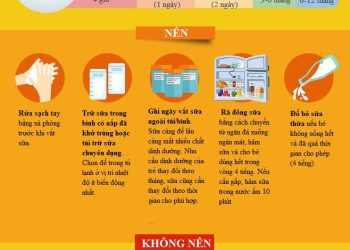Certain errors made during the coin minting process can transform ordinary coins into highly sought-after collector’s items. These “error coins” can be worth significantly more than their face value, sometimes reaching thousands or even millions of dollars.
The value of an error coin is primarily driven by three factors: rarity, condition, and demand from collectors.
- Rarity: The fewer examples of a particular error coin that exist, the more valuable it becomes . For instance, a 1943 Copper Lincoln Cent , a coin mistakenly struck on a bronze planchet instead of the wartime steel planchet, is exceptionally rare, with only a few dozen known examples. This scarcity makes it one of the most valuable error coins, potentially worth over $800,000.
- Condition: Well-preserved error coins, particularly those in mint condition, command higher prices than those with significant wear and tear from circulation.
- Demand: The overall popularity of the coin series and the specific type of error also play a role in determining its value. Certain errors, like the 1955 Doubled Die Lincoln Cent, are iconic and highly desirable among collectors.
Error coins fall into three main categories:
- Planchet errors: These involve mistakes with the blank metal disks (planchets) used to create coins. Examples include:
– Wrong Planchet: A coin struck on a planchet intended for a different denomination or even a foreign coin. For example, the 1943 Copper Lincoln Cent was struck on a bronze planchet instead of the wartime steel planchet.
– Clipped Planchet: A portion of the planchet is missing, resulting in a coin with an incomplete or unusual shape.
– Blank Planchet: A planchet that was never struck with a design.
- Die errors: These involve imperfections or mistakes with the metal stamps (dies) that imprint the design onto the coins. Examples include:
– Doubled Die: A coin receives a second, unintended impression from the die, resulting in a doubling of the design elements, like the date or inscriptions. The 1955 Doubled Die Lincoln Cent is a famous example.
– Die Cracks and Cuds: Damage to the die results in raised lines or blobs on the coin’s surface.
– Misaligned Dies: The dies are not perfectly aligned during striking, causing the design to be off-center or rotated.
- Strike errors: These occur during the actual striking process when the design is impressed onto the coin. Examples include:
– Off-Center Strike: The coin is not properly centered when struck, resulting in a design that is partially outside the coin’s edge.
– Broadstrike: The collar that normally prevents the metal from spreading during striking malfunctions, resulting in a wider, thinner coin with a plain edge.
– Multiple Strikes: The coin is struck more than once by the die, resulting in multiple or overlapping images.
While most defective coins are caught and removed during the minting process, some do escape into circulation. You might stumble upon a valuable error coin in your pocket change or by purchasing rolls of coins from a bank.
Here are some tips for identifying error coins:
- Look for odd colors: A penny that isn’t copper-colored or a dime that isn’t silver-toned could be an indication of a wrong planchet error.
- Examine the lettering and numbers for doubling: Doubled die errors can create a subtle or dramatic “echo” effect on the design.
- Check both sides of the coin: Look for mismatches between the obverse and reverse designs, which could indicate a mule coin (a coin struck with two different dies).
- Look for off-center strikes: Dramatic off-center strikes are more valuable than minor ones.
- Pay attention to weight and size: Variations in these aspects could indicate a wrong planchet or other error.
- Use magnification: A magnifying glass can help you spot subtle errors that might be missed with the naked eye.
- Compare your coin to known examples: Researching known error coins can help you identify potential rarities.
- Be wary of fakes: Some individuals attempt to create counterfeit error coins. Stick to reputable dealers and certified coins to avoid being scammed.
If you believe you have found a valuable error coin, it’s best to consult with a professional coin dealer or appraiser to get an expert opinion and valuation. They can help you determine the coin’s authenticity and potential worth.









What error coins are valuable?
Good point! Overdates, mules, brockage, double denomination, and struck on the wrong planchet errors are often valuable. Errors on ancient, medieval, and higher-value coins, however, may be detrimental to the coin’s numismatic value.
How do I find out how much my error coin is worth?
The Error Coin Price Guide, generously provided by minterrornews.com, can help by showing recent sales and by providing more information regarding the specific minted error. To use the guide, simply click the error coin image. The appropriate minterrornews.com price guide page will automatically load.
What coin is worth $40,000?
From my experience, PCGS values a 1966 Jefferson Nickel in MS66 FS as worth $40,000 and the reason is the grade (MS66) and the striking designation “Full Steps” or “FS”. The 1966 nickel is extremely rare when the steps are fully struck and in the grade MS66 it’s a registry quality coin.
What quarters are worth money and have errors?
2004-D Wisconsin Extra Leaf Quarter (High & Low Leaf) – Worth $50 to $1,500+.
1999-P Delaware “Spitting Horse” Quarter – Sells for $20 to $500+.
2005 Minnesota Doubled Die Quarter – Can be worth $50 to $300+.